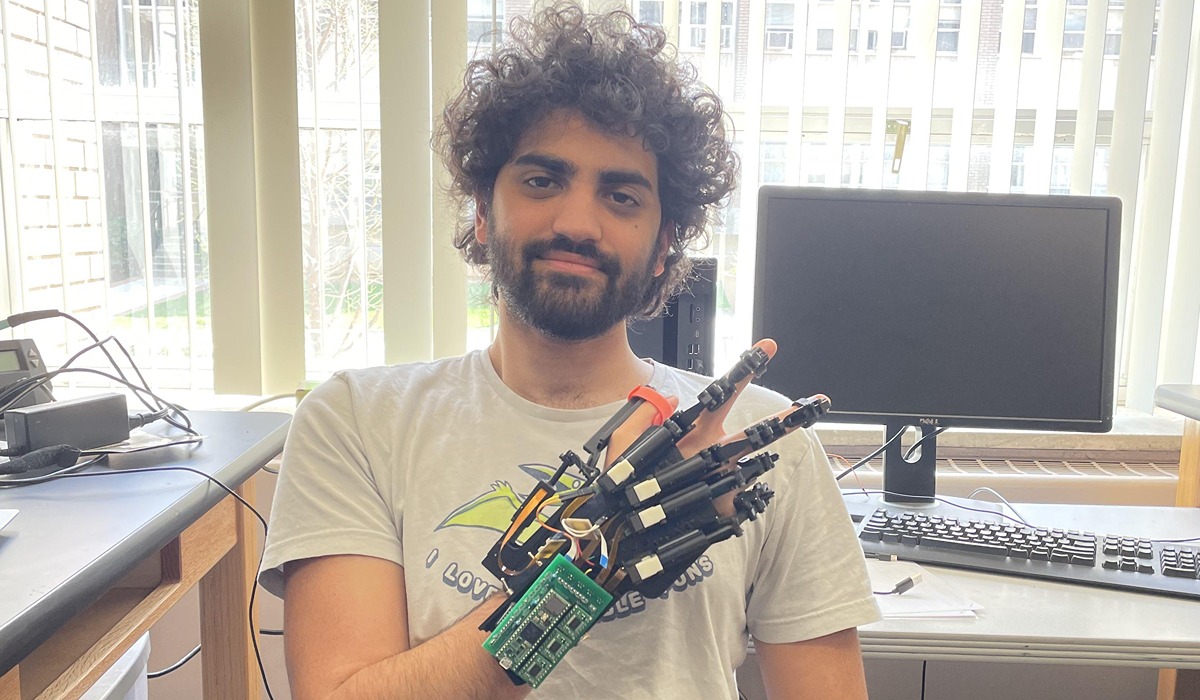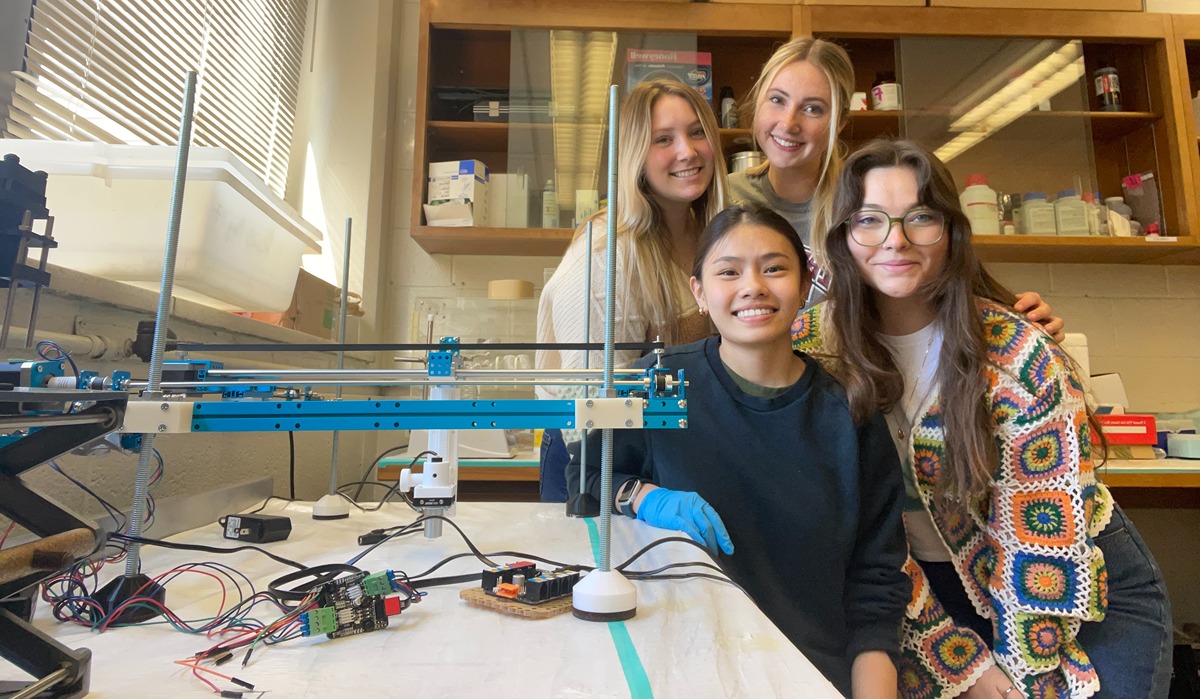
University Research Day 2023 is almost upon us! On April 18, innovators across academic disciplines will share with the University community their discoveries. From students to faculty to staff, URD is a full day of events celebrating the pursuit of knowledge. Here’s a sneak peak at some of the promising URD presentations from biomedical engineering students:
Doctoral candidate develops bionic hand to help stroke survivors

Matteo Pergami-Peries is in the midst of clinical trials on “HandMATE: Hand Movement Assisting Therapy Exoskeleton” to help stroke survivors regain function in their hands.
Pergami-Peries is excited to present what he said are promising preliminary results to the University community at URD 2023.
He said the project has helped him “grow and develop my interest in robotics and neurology, as well as get real-world experience in implementing theoretical technology in the real world.”
Pergami-Peries said he has been especially grateful for the mentorship of professor of biomedical engineering Peter Lum at every step in development. The research is funded by the National Institute of Disability, Independent Living, and Rehabilitation Research .
Undergraduates help wounded veteran get back in the swing of things on the golf course

For over a year, Madison Hughes has been part of a team developing a golf adaptive device for Army veteran Eric Lund who lost both arms in an improvised explosive device blast in Afghanistan. He is the first U.S. patient to undergo a bilateral arm transplant. Following the surgery, he was unable to grip a pencil or flex his wrists. But nothing could keep him from the green.
“His passion for playing golf was transformed to a means of physical therapy to help him regain his hand and arm strength,” said Hughes, but she explained, “As of now, the veteran’s hands are strapped to a golf club by another person, limiting his mobility to only putting and chipping.”
A previous group of students had started working on a prototype for Lund back in 2019 , but it was far from a hole-in-one. Under the guidance of Gregory Behrmann, biomedical engineering clinical associate professor, the torch was passed to Hughes and her fellow researchers to design “an adaption device, so he would be able to play a full round of golf independently.”
They have developed several different prototypes since picking up the project this past fall, using the veteran’s feedback each time to create a better device. For the fourth prototype, they settled on a glove that he can latch onto a customized golf club handle. This March, they used a 3D printer to produce the components for their design and started testing it with him this month.
For the rest of the year, they hope to improve their current prototype and design others adapted to different types of clubs.
Hughes said she and the team are excited to share their ongoing project with the Cardinal community at URD.
“We hope that people will learn more about the importance of helping others in society using the knowledge and technology that are accessible to them,” said Hughes.
Seniors team up to develop techniques for tissue reconstruction

Biomedical engineering seniors Elizabeth Staten, Chelsea Loh, Heather Berberich, and Aubree Narus are presenting a cutting-edge 2D bioprinting platform to reconstruct tissue for breast cancer survivors.
After a mastectomy, the typical treatment is to harvest and transfer tissue from another part of a patient’s body for breast reconstruction. This can be expensive and there can be complications during and after surgery. Inspired by emerging bioprinting technologies, the students started working toward an alternative. The technology they are using is called photobiofabrication because it uses lasers to seed cells into gels to be cultured into harvestable tissue.
“Our goal is to create a way to make photobiofabrication faster and more scalable to enable bioprinting of implantable tissue constructs for tissue reconstruction,” said Staten. “Our design offers a more cost-effective solution to the market, allowing for increased testing and production.”
She said their URD advisor provided invaluable support including letting them conduct their research at Raub is also serving as co-chair for the URD 2023 planning committee.
Staten said, on behalf of her teammates, that she is excited “to present our Senior Design project at URD because of how unique it is.”
"We hope to share our research and our prototype with people to excite them about the future,” said Staten.